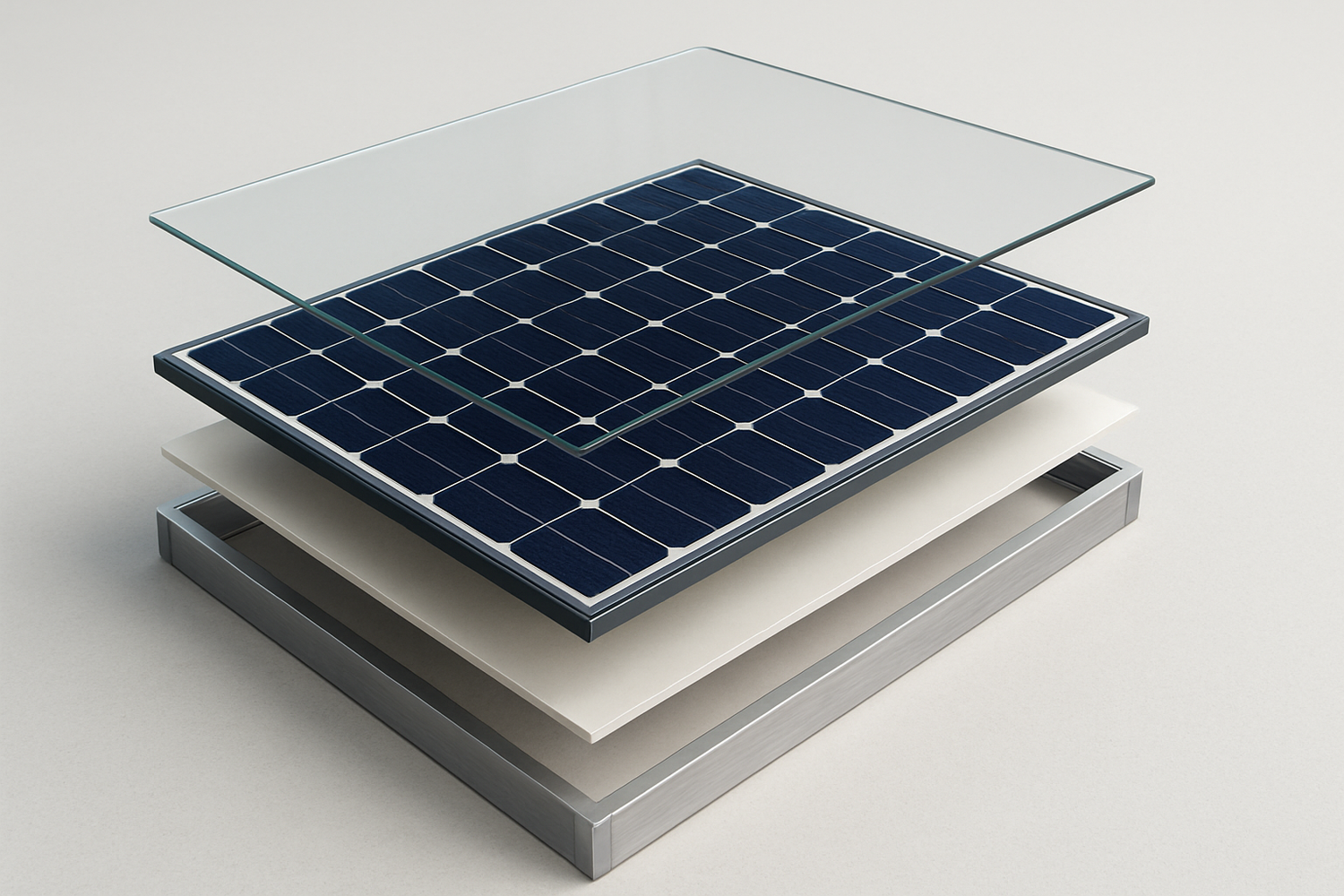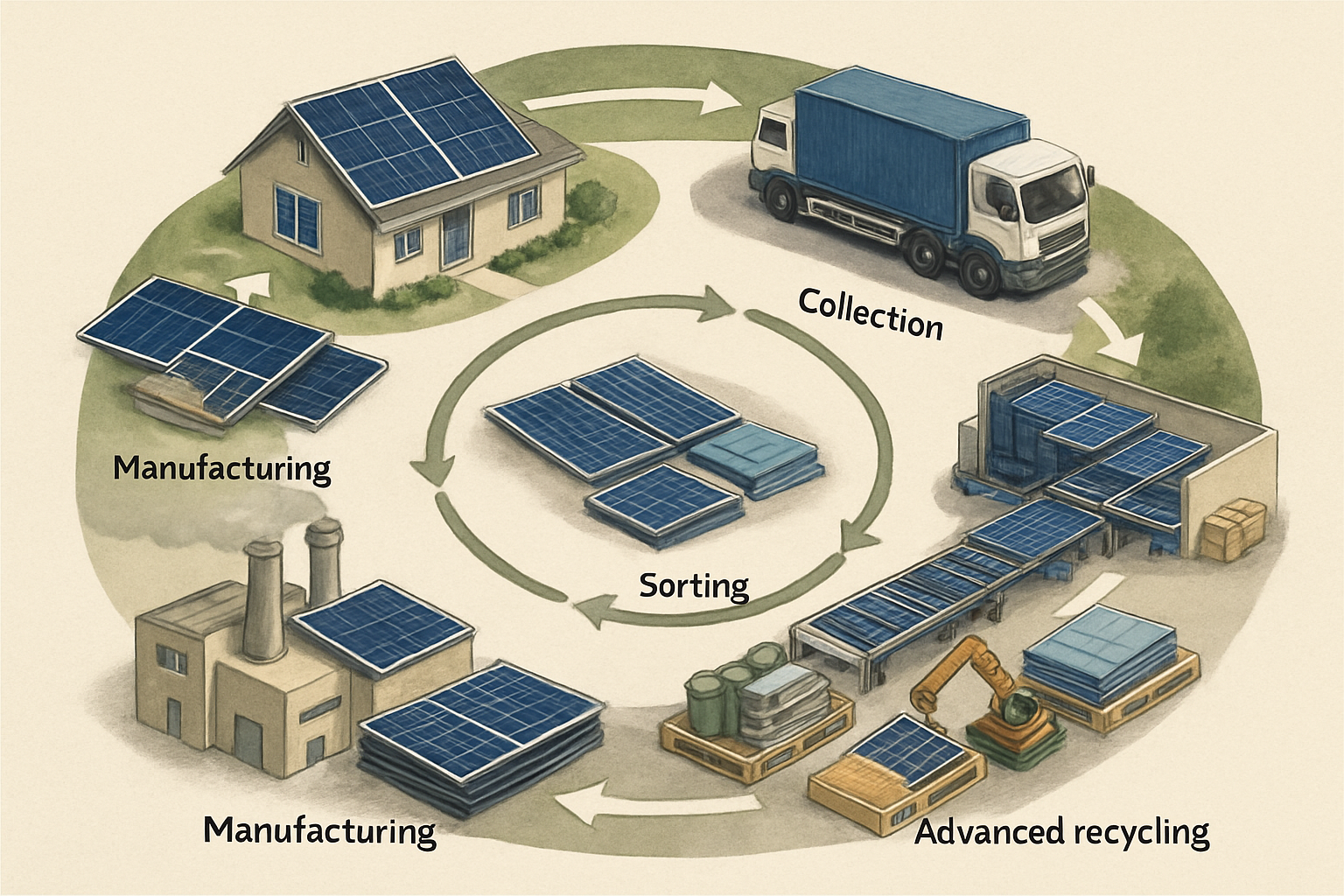The rapid growth of solar energy brings many questions, and one common concern often arises: are solar panels considered hazardous waste? This question touches on the environmental impact of solar technology, particularly at the end of a panel's operational life. You will find that the reality is far more nuanced and reassuring than the myth suggests, pointing towards a sustainable future driven by innovation and responsible management.

Deconstructing the Myth: What Are Solar Panels Made Of?
To understand if solar panels are hazardous, you must first examine their composition. Modern photovoltaic (PV) panels are primarily made from common, non-toxic materials. The vast majority of a panel consists of glass, aluminum, and silicon. These materials are abundant and generally safe.
Core Components and Materials
A typical silicon-based solar panel, which dominates the market, comprises several layers:
- Glass: This forms the front protective layer, accounting for about 70-80% of the panel's weight. It is standard glass, similar to what you find in windows.
- Aluminum Frame: The frame provides structural integrity and protection, making up about 10% of the weight. Aluminum is highly recyclable.
- Silicon Cells: These are the active components that convert sunlight into electricity. Silicon is the second most abundant element in the Earth's crust and is non-toxic.
- Encapsulant (EVA): Ethylene-vinyl acetate (EVA) laminates and protects the silicon cells.
- Backsheet: Typically made of polymer, it provides electrical insulation and environmental protection.
- Copper Wiring: Small amounts of copper are used for electrical connections.
These primary materials are not inherently hazardous. For instance, the International Energy Agency (IEA) highlights the importance of critical minerals in clean energy transitions, but the bulk materials in solar panels are not typically classified as critical or hazardous in their final form.
Trace Elements and Potential Concerns
While the majority of a solar panel is benign, some trace elements can be present, particularly in older panel designs or specific thin-film technologies. These might include small amounts of lead (in solder), cadmium (in cadmium telluride thin-film panels), or selenium. However, these materials are encapsulated within the panel, minimizing their risk during operation. The concentration of these elements often falls below regulatory thresholds for hazardous waste classification, especially when tested using methods like the Toxicity Characteristic Leaching Procedure (TCLP).
Regulatory Landscape: Classifying Solar Panel Waste
The classification of solar panel waste is a critical aspect of their end-of-life management. Regulations vary by region, but a common thread is the distinction between general waste and hazardous waste based on specific criteria.
Defining Hazardous Waste
Hazardous waste typically refers to waste that poses a substantial or potential threat to public health or the environment. Regulatory bodies, such as the U.S. Environmental Protection Agency (EPA) under the Resource Conservation and Recovery Act (RCRA), define hazardous waste based on characteristics like ignitability, corrosivity, reactivity, and toxicity. For solar panels, the primary concern would be toxicity, specifically if certain heavy metals could leach into the environment at harmful concentrations.
Current Classifications and Exemptions
Many jurisdictions do not classify end-of-life solar panels as universally hazardous waste. For example, the Washington State Department of Ecology issued a conditional exclusion for electronic wastes, which can apply to PV modules, provided they are managed responsibly. This means that while some components might contain materials that could be hazardous in isolation, the panel as a whole, when intact, often does not meet the criteria for hazardous waste. The focus shifts to proper handling and recycling to prevent any potential environmental release of these trace elements. The Washington State Legislature also provides definitions within its Dangerous Waste Regulations, further clarifying what constitutes hazardous materials.
The Reality of End-of-Life Management: Recycling and Reuse
The solar industry recognizes the importance of responsible end-of-life management. Significant advancements in recycling technologies and the establishment of robust collection programs are transforming how decommissioned panels are handled, moving towards a circular economy.
Advanced Recycling Processes
Modern recycling processes for solar panels aim to recover valuable materials efficiently. These methods can be broadly categorized:
- Mechanical Recycling: This involves disassembling the panel, separating the aluminum frame and junction box, and then shredding the remaining glass-silicon laminate. Glass and aluminum are recovered, and the silicon cells can be further processed.
- Thermal Recycling: Heat treatment can pyrolyze the encapsulant (EVA), allowing for easier separation of glass and silicon cells. This method can recover high-purity silicon.
- Chemical Recycling: Chemical processes can dissolve specific layers or materials, enabling the recovery of high-value elements like silver, copper, and even high-purity silicon. Research by Ardente, Latunussa, and Blengini (2019) explores resource-efficient recovery of critical and precious metals from waste silicon PV panel recycling. Furthermore, Wang et al. (2008) presented a novel approach for recycling kerf loss silicon from cutting slurry waste for solar cell applications, demonstrating early efforts in material recovery.
These processes ensure that a significant portion of the panel's materials, often over 90% by weight, can be recovered and reintroduced into manufacturing supply chains, reducing the need for virgin materials.
Economic and Environmental Benefits of Recycling
Recycling solar panels offers compelling benefits. Economically, it allows for the recovery of valuable materials like silicon, silver, and copper, which can offset recycling costs and reduce reliance on new raw material extraction. Environmentally, recycling significantly reduces landfill waste, conserves natural resources, and lowers the energy footprint associated with producing new materials. The International Renewable Energy Agency (IRENA) and NREL's 2016 report on End-of-Life Management for Solar Photovoltaic Panels highlights the potential for substantial material recovery and the importance of developing robust recycling infrastructure.
| Material | Approximate Percentage | Recyclability |
|---|---|---|
| Glass | 70-75% | High |
| Aluminum Frame | 10-15% | High |
| Silicon | 3-5% | Medium to High |
| Plastics (EVA, Backsheet) | 5-10% | Low to Medium |
| Copper, Silver, Other Metals | <1% | High |
Driving a Sustainable Future: Industry Initiatives and Policy
The solar industry, alongside policymakers, is actively working to establish comprehensive frameworks for sustainable solar panel management. These efforts ensure that the environmental benefits of solar energy extend throughout its entire life cycle.
Extended Producer Responsibility (EPR) and Stewardship Programs
Extended Producer Responsibility (EPR) programs hold manufacturers accountable for the entire life cycle of their products, including end-of-life collection and recycling. Several regions, particularly in Europe, have implemented EPR schemes for PV modules. In the United States, states like Washington have enacted specific legislation, such as the Photovoltaic Module Stewardship and Takeback Program, to facilitate responsible end-of-life management. These programs create a framework for funding and operating collection and recycling infrastructure, ensuring that panels do not end up in landfills.
Innovations in Panel Design for Recyclability
Beyond recycling processes, manufacturers are increasingly designing panels with recyclability in mind. This includes using fewer hazardous materials, simplifying panel construction for easier disassembly, and exploring alternative encapsulants that are easier to separate. These design choices contribute to a more circular economy, where materials are recovered and reused, minimizing waste and maximizing resource efficiency. Our focus on reliable and scalable energy solutions, including advanced lithium iron phosphate (LiFePO4) batteries and integrated energy storage systems, complements these efforts by extending the overall lifespan and utility of solar installations.
A Sustainable Energy Horizon
The idea that solar panels are hazardous waste is largely a misconception. While they contain a small amount of trace elements, the vast majority of their components are non-toxic and highly recyclable. Through advanced recycling technologies, robust regulatory frameworks like EPR, and continuous innovation in panel design, the solar industry is committed to ensuring that solar energy remains a clean and sustainable power source from production to decommissioning.
Embracing solar power means investing in energy independence and a cleaner future. With integrated solutions like high-performance LiFePO4 batteries and hybrid inverters, you can create a reliable energy system for your home or business, confident that the industry is working towards responsible end-of-life management for all components.
Frequently Asked Questions
Are all solar panels considered non-hazardous?
Most modern crystalline silicon solar panels are not classified as hazardous waste under federal regulations, provided they are intact. Some older panels or specific thin-film technologies might contain trace amounts of materials that could be hazardous if not managed properly. However, these materials are typically encapsulated, and the panels often pass toxicity leaching tests.
What happens to solar panels at the end of their life?
At the end of their operational life, typically 25-30 years, solar panels can be decommissioned and sent for recycling. Specialized facilities separate the various materials—glass, aluminum, silicon, copper, and plastics—for reuse in new products. Some panels may also be refurbished and reused in secondary markets.
Is solar panel recycling economically viable?
The economic viability of solar panel recycling is improving as technology advances and waste volumes increase. The recovery of valuable materials like silicon, silver, and aluminum helps offset recycling costs. Policy mechanisms like Extended Producer Responsibility (EPR) also play a crucial role in funding and incentivizing recycling infrastructure.
How can I ensure my solar panels are disposed of responsibly?
When your solar panels reach their end-of-life, contact your original installer, the panel manufacturer, or a specialized solar panel recycling company. Many manufacturers participate in take-back programs or can direct you to certified recycling facilities. Look for programs that adhere to environmental standards and prioritize material recovery.





Leave a comment
All comments are moderated before being published.
This site is protected by hCaptcha and the hCaptcha Privacy Policy and Terms of Service apply.